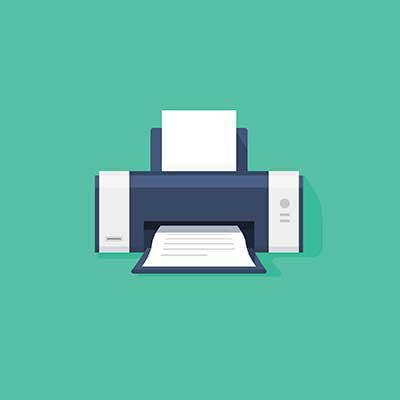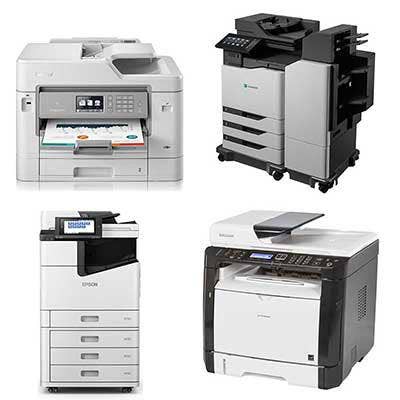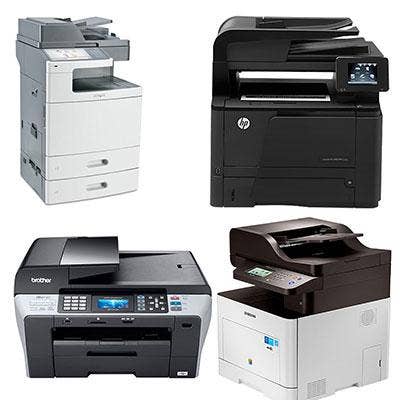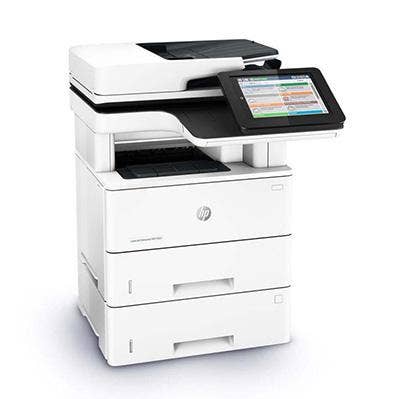8 Printer Market Trends To Watch

Fit To Print
The "paperless office" hasn't arrived for most of us, and it's not about to any time soon, according to Keith Kmetz, program vice president for imaging, printing and document solutions at research firm IDC. On the whole, printing "is a maturing business, but it is a mission-critical function," Kmetz told CRN. "It is something that businesses need -- even with the many initiatives that may be moving away from printing." Major trends affecting the office printer industry include shifts toward multifunction printers and inkjet technology, and heightened competition in the A3 market. Meanwhile, managed print services are expected to become a greater focus for small and midsize businesses, creating major new opportunities for solution providers.
As part of CRN's Printer Week 2017, we've rounded up eight of the top trends to watch in the printer market.

Generational Differences
The "millennial factor" is driving major change in the office in many ways, including around printing. Millennial-aged employees tend to prefer working on digital devices and thus "work differently than somebody who's older, who's used to making marks on paper while doing work " Kmetz said. But most businesses won't be able to just eliminate their printing fleet outright because employers typically have a range of generations in an office. "The market has to cater to a number of generations in the workforce -- some who rarely print, some who print everything they want to get their hands on," Kmetz said.

Multifunction Vs. Single Function
Multifunction printers (or MFPs) -- with functionality including printing, copying, scanning and faxing -- are increasingly displacing single-function printers. MFP shipments surpassed single-function device shipments in 2016, according to IDC research, and MFPs are expected to widen their lead over single-function printers in coming years. The shift is coming as businesses pursue cost efficiencies and as management of printing fleets continues to improve, Kmetz said.

Inkjet Vs. Laser
Laser printing technology has long dominated the office, and research form Gartner reports that inkjet printers accounted for less than 8 percent of office print volumes in 2016. But inkjet technology has come a long way in terms of print quality and speed, and inkjet is generally less costly than the average laser printer (thanks in part to lower costs for supplies and power with inkjet). As vendors such as HP Inc. and Epson push the technology, acceptance of inkjet is only expected to increase -- particularly in small and midsize businesses. As a result, Gartner forecasts that inkjet will grow to account for 15 percent of office print volumes by 2020.

A3 Market Competition
The market for A3 devices -- which are able to handle 11 x 17-inch paper in addition to 8 x 12-inch -- is a massive one, at an estimated $55 billion a year. The competition is now heating up, as HP Inc. aims to disrupt the market with new A3 offerings based on its PageWide (inkjet) technology that were unveiled in September. A3 was also a key driver behind HP's $1.05 billion acquisition deal for Samsung's printer business, which is expected to close this fall. Meanwhile, other printer vendors aren't sitting still, with Canon rolling out new A3 printers for its third-generation imageRunner Advance line at a steady clip and Xerox launching 17 new A3 printers in March.

Managed Print Services Growing In SMBs
Managed print services (or MPS), which aim to optimize printer usage to save resources and money, are becoming an option for a greater number of service providers thanks in part to the large number of print management software options out there. The existence of more MPS providers -- and lower pricing from higher competition -- are poised to bring MPS to more types of businesses, especially those in the small and midsize segments, according to Gartner. And channel partners -- many of which focus on SMBs -- are expected to reap 30 percent of MPS revenue by 2020, up from 20 percent currently, Gartner said.

MPS Providers Expand Their Sights
Even as managed print services grow, providers of MPS are starting to branch out in order to have a role with customers that goes beyond traditional print. "They're now extending that value to the IT environment, to provide a type of service offering that will enable the end user to better manage its entire IT landscape," Kmetz said. "Just doing print solutions is significant, but if you're helping a customer manage its IT environment, you're now critically important to a customer." One example of the trend is Konica Minolta's acquisition in 2011 of All Covered, an IT service provider focused on areas including cybersecurity and cloud.

Document Security
The concept of document security -- ensuring that the right person gets their printed document -- sounds simple on the face of it, but hasn't caught on completely yet, according to Keith Fenton, software and solutions marketing manager for Oki Data Americas. "A damaging breach could even be as simple as a confidential document that was never retrieved and fell into the wrong hands," Fenton said. "This situation becomes more likely as companies work to consolidate their printing fleets." The most efficient solution, Fenton said, is to implement devices with document control. Options include having employees swipe their ID badge, or enter a username and password, in order to retrieve sensitive documents from a printer.

Consolidation
In September, HP Inc. unveiled a deal to acquire Samsung's printer business for $1.05 billion. The acquisition is expected to close by the fall of 2017 -- and there could be more combinations to come in the printer space as the industry continues going through such major changes. "I wouldn't be surprised to see more consolidation," IDC's Kmetz said. "I don't think it's going to be widespread, but we could see more of that shrinking of the number of providers in the market."